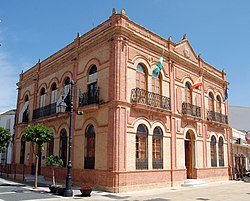San Juan del Puerto | |
|---|---|
| Country | Spain |
| Autonomous community | Andalusia |
| Province | Huelva |
| Area | |
• Total | 45 km2 (17 sq mi) |
| Elevation | 10 m (33 ft) |
| Population (2024-01-01) [1] | |
• Total | 9,811 |
| • Density | 220/km2 (560/sq mi) |
| Time zone | UTC+1 (CET) |
| • Summer (DST) | UTC+2 (CEST) |
| Website | http://www.sanjuandelpuerto.es/ |

San Juan del Puerto, Spain is a municipality located in the province of Huelva, Spain. In 2005 it had a population of 6,881.
